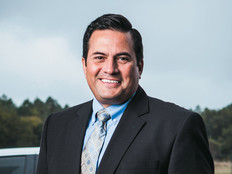How Local Governments’ Wi-Fi Networks Will Contend with LTE-U Technology
City and local governments use unlicensed Wi-Fi networks for a variety of reasons. They give tourists connectivity in public parks, offer students free Wi-Fi at libraries, allow infrastructure to be connected in smart-cities deployments and help send out alerts in public emergencies. However, those Wi-Fi networks could be harmed by interference from a wireless technology known as Long Term Evolution-Unlicensed (LTE-U), according to a recent report.
And that could hamper local governments’ Wi-Fi in schools and libraries, police vehicles and ambulances, and Internet of Things deployments, according to the report.
The report, “LTE-U Interference in Unlicensed Spectrum: the Impact on Local Communities and Recommended Solutions,” was prepared by engineering consulting firm CTC Technology & Energy and sponsored by WifiForward, a coalition of cable and technology companies that want to expand Wi-Fi access by encouraging use of more unlicensed spectrum and that have fought LTE-U deployments.
The report calls on the wireless industry to bring LTE-U “to a technology standards body, designing tests through an open process, and then making adjustments to ensure that both LTE-U and other unlicensed technologies can thrive without displacing existing users.”
This is critical, according to the report, because local governments’ innovation will be “stifled if Wi-Fi sometimes works and sometimes does not.” CTC Technology points out that “the issue of LTE-U interference is not just an academic argument about spectrum use — it will have real impact on the services that we expect local government to provide, and that local government performs exceedingly well.”
The Interference Challenge
LTE-U is a 4G wireless technology that wireless operators are planning to deploy to add more capacity to networks. The technology lets the carriers use the same LTE technology they have running in their licensed spectrum bands in unlicensed spectrum bands, including 2.4 GHz, 3.5 GHz and 5 GHz. According to FierceWireless, Verizon and T-Mobile plan to deploy LTE-U later this year and AT&T is testing it.
But many Wi-Fi proponents have said that LTE-U, as it exists now, poses interference concerns because it does not have built-in “listen-before-talk” capabilities.
The CTC report says that “there is evidence that LTE-U systems can impair or shut down Wi-Fi in a wide range of common scenarios in local government operations, because LTE-U often does not sense Wi-Fi devices. When an LTE-U system does sense Wi-Fi devices, it is designed to transmit with an on-off duty cycle rather than wait for silence —so it essentially talks over the Wi-Fi devices.”
The wireless industry standards group 3GPP is currently working on final standards for a globally available technology known as Licensed-Assisted Access (LAA), which will have the listen-before-talk capabilities. When carriers deploy LAA, the thinking goes, devices will listen to see if there is Wi-Fi activity on a channel, and if there is, they will not transmit. That would go a long way to mitigating the interference concerns.
Yet according to the report, LAA might not solve the issue. “Even when an LTE-U system is programmed to wait (e.g., the LAA variant, which is planned for environments where LBT is required by regulation), it waits for a much shorter amount of time than a Wi-Fi system. Collectively, these attributes mean that both LTE-U in its current form and LAA can dominate the unlicensed spectrum rather than share it with Wi-Fi.”
Aligning with Government Interests
Ed Gubbins, a senior analyst for mobile access infrastructure at Current Analysis, tells StateTech that once the standards are finalized (expected by midyear), “there is going to be a period where we see how these technologies work in the real world and there is going to be that learning curve. These concerns were anticipated pretty far in advance. I think the [LTE-U network] vendors are invested in making a good early impression here. Their interests should be aligned with the concerns of those Wi-Fi users.”
Carriers are likely going to deploy LTE-U and LAA at medium-size or large companies and in large buildings where there are a lot of indoor users and a need for more capacity, Gubbins said. Because the technology is likely going to be deployed in discrete areas, that could limit interference concerns.
Operators might deploy LTE-U or LAA with local government customers, especially for midsize venues with lots of users, he says. Carriers that work with local governments are going to do whatever they can to avoid disrupting their Wi-Fi networks for fear of losing government business.
“The operators that want to deploy this technology have an even greater incentive to address these concerns, because they are the ones who are going to be dealing directly with the people who have those concerns,” Gubbins notes.
The Need for Testing and a National Solution
Cities clearly have a stake in the outcome of the debate, says Blair Levin, a nonresident senior fellow with the Brookings Institution’s Metropolitan Policy Program. He tells StateTech that when it comes to interference concerns, local governments’ technical capabilities are often different from those of large tech companies.
“Cities, like all institutions that increasingly rely on communications technology as a core foundation for how they deliver their goods and services, they have to adjust,” he says.
Blair contends that the interference debate needs to be addressed on a national level by the Federal Communications Commission. The Commission, he said, needs to ensure that unlicensed spectrum can be used for new services like like LTE-U, while also protecting existing Wi-Fi users. And the problem is not unique to Atlanta, Los Angeles, New York or any other city, he adds. “These [Wi-Fi] devices have to work in every city in the same way.”
Meanwhile, testing is ongoing. Last month the Wi-Fi Alliance released a draft coexistence test plan for Wi-Fi and LTE-U. Among other steps, the CTC report calls for more testing in a “neutral” environment, for standards to be finalized before carriers deploy LTE-U equipment and for a listen-before-talk “mechanism for access to the spectrum in all environments — even though it is not required by regulations in the U.S.”








